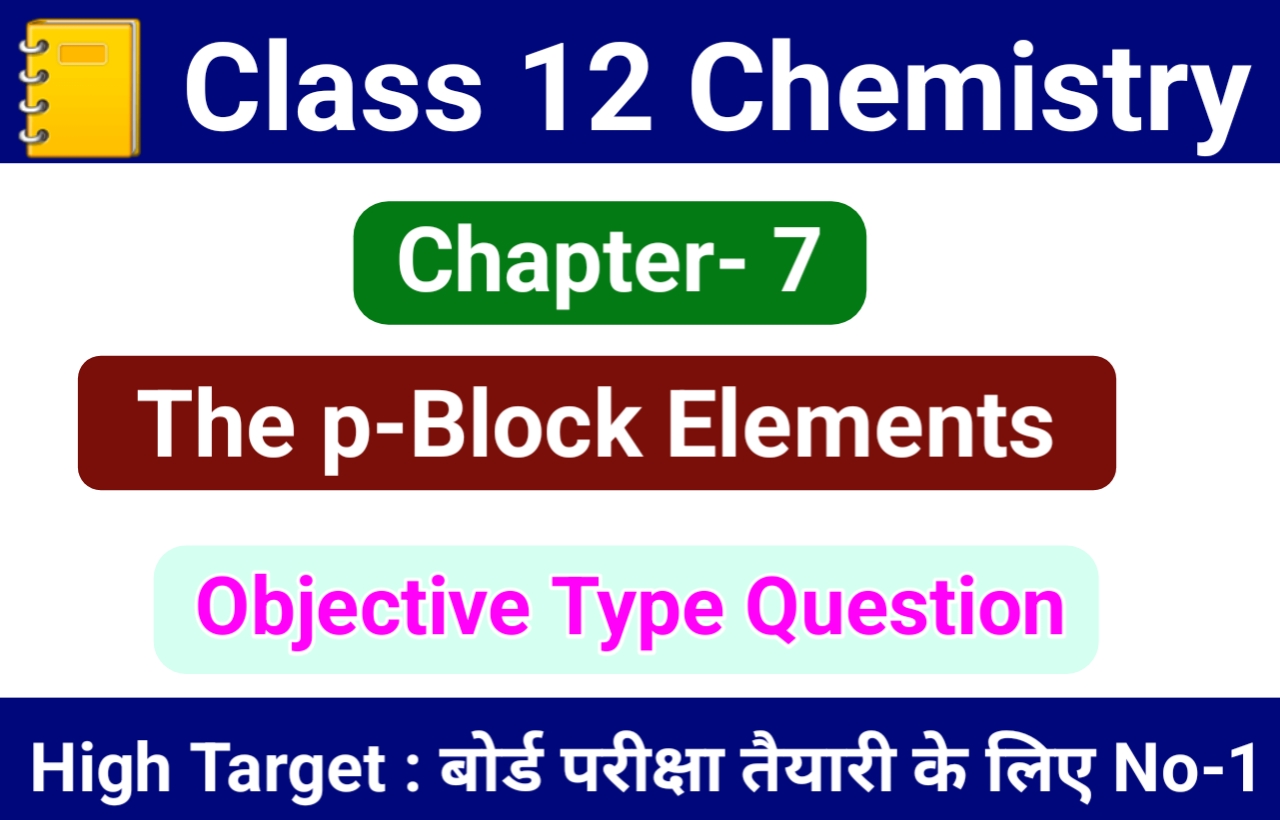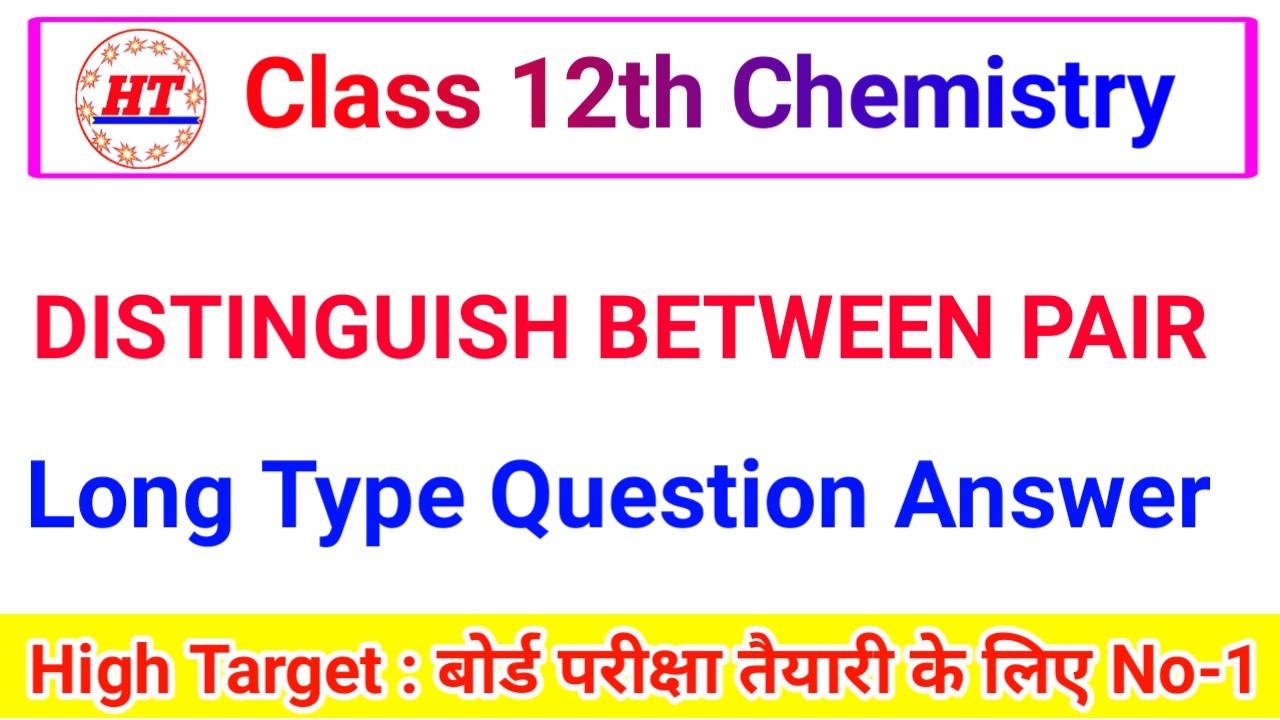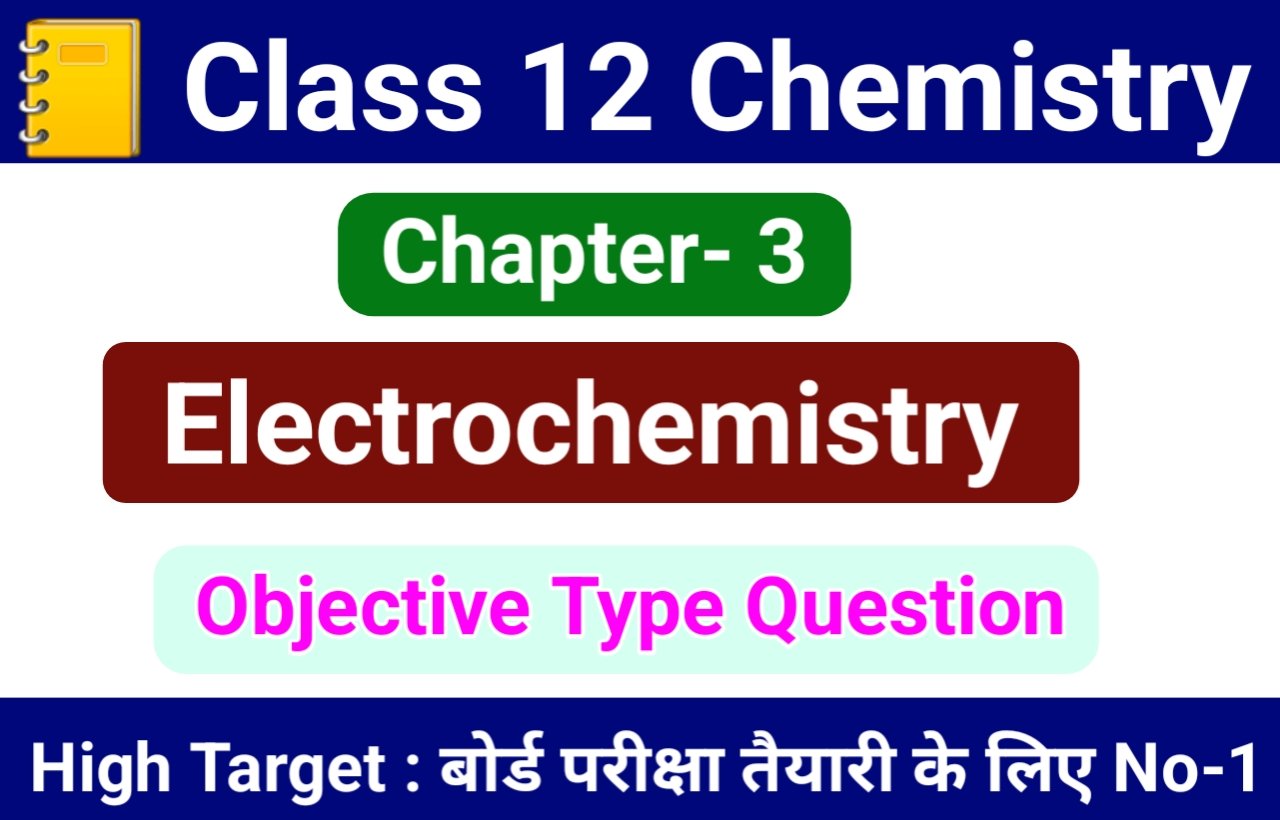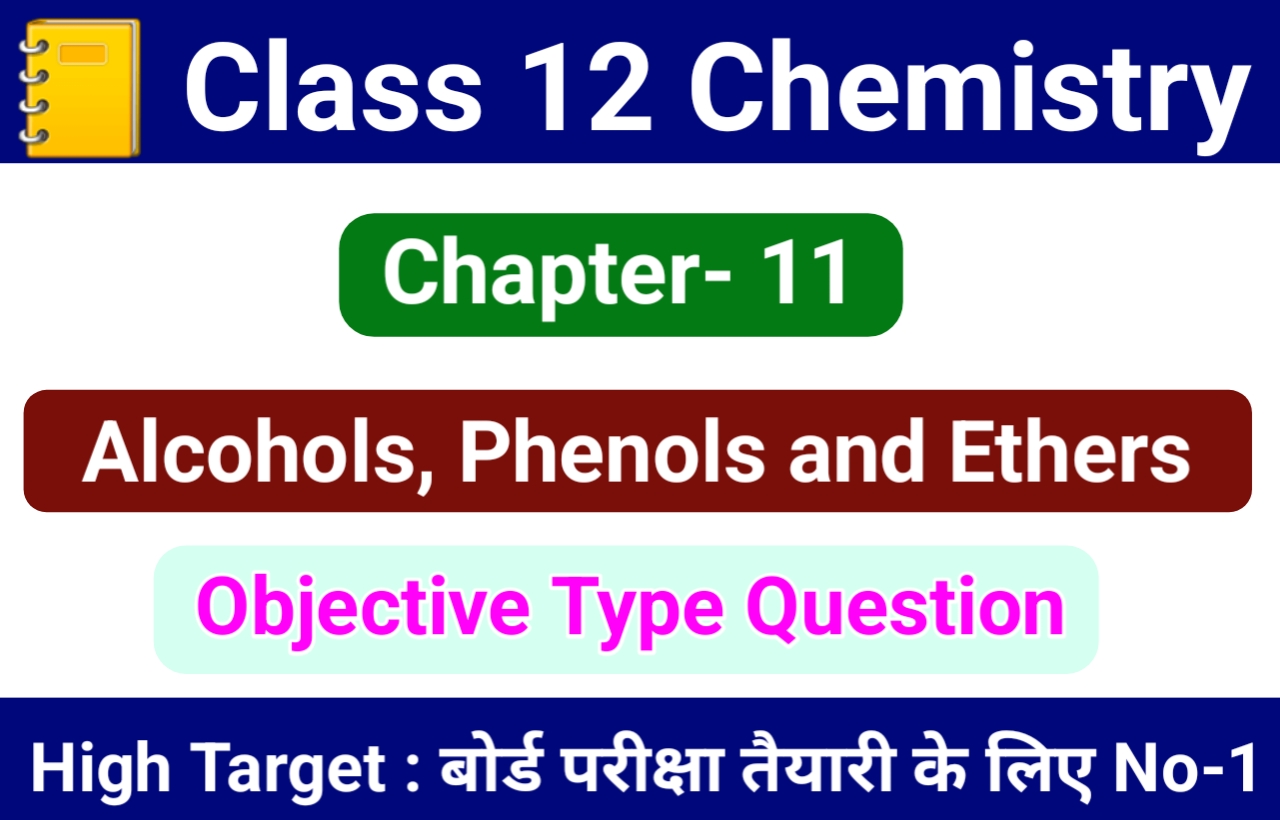6. GENERAL PRINCIPLES & PROCESSES OF ISOLATION OF ELEMENTS
6. GENERAL PRINCIPLES & PROCESSES OF ISOLATION OF ELEMENTS
Q. 1. Differentiate between minerals and ores.
Ans. Differentiate between minerals and ores are as follows :
| Minerals | Ores | ||
| 1 | The natural materials in which the metals or their compounds are found in earth ore called minerals. | 1 | Those minerals from which the metals can be extrated conveniently and profitably are called ore |
| 2 | All the ores are minerals. | 2 | All the minerals are not ores. |
Q. 2. Write chemical reactions taking place in the extraction of zinc from zinc blende.
Ans. (a) Roasting : The concentrated ore is heated with oxygen at 900°C in reverberatory furnace to convert zinc sulphide to zinc oxide. At 900°C zinc sulphate which is formed due to the oxidation of zinc sulphide also decomposes to zinc oxide.
2ZnS + 3O2 → 2ZnO + 2SO2
ZnS + 2O2 + ZnSO4
2ZnSO4![]() 2ZnO + 2SO2 + O2
2ZnO + 2SO2 + O2
(b) Reduction : Zinc oxide is reduced to zinc with the help of carbon.
ZnO + C → Zn + CO
Q. 3. Copper can be extracted by hydro metallurgy but no zinc. Explain.
Ans. Copper can be extracted by hydrometallurgy. The solution is leached out using acid. The solution containing Cu2+ is treated with H2.
Cu2+(aq) + H2 (g) → Cu (S) + 2H+ (aq)
Zinc cannot be extracted by hydrometallurgy as zinc is highly reactive metal. It may not be possible to replace it from a solution.
Q. 4. What is the role of depressant in froth floatation process ?
Ans. If a mixture of two sulphides (say, ZnS and PbS) are to be separated and concentrated by Froth Floatation process, a substance called depressant (in this case NaCN) is used. It selectively prevents ZnS from coming to the froth but allows PbS to come up with teh froth.
Q. 5. Why is the extraction of copper from pyrites more difficult than that from its oxide ore through reduction ?
Ans. The Gibs energies of formation of most sulphides are greater than for Cu2O. In fact Cu2O is an endothermic compound. Hence it is a common practice to roast sulphide ores to corresponding oxides prior to reduction.
Q. 6. State the role of silica in the metallurgy of copper.
Ans. Silica acts as a flux to remove the impurities foxides of iron remaining in the matter by forming silicate, FeSiO3 which is a fusible slag.
SiO2 + FeO → FeSiO3
Silica Slag
Q. 7. What is meant by the term chroma tography ?
Ans. Chromatography : It is defined as a techique of separating the components of amixture in which sepration is achieved by the differential movement of individual components through a stationary phase under the influence of a mobile phase.
Q. 8. What criterion is followed for the selection of the stationary phase in chromato graphy ?
Ans. Different components to be seprated from the given mixture should be able to get differently adsorbed on the adsorben like silica or aluminia gel (SiO2 or Al2O3). The stationary phase should be immobile and immiscible.
Q. 9. Describe a method for refining nickel.
Ans. Nickel is refined by MOND process. W impure nickel is heated in a current of CO at 330–350k it form volatile nickel carbonyl leaving behind the impurities. The nickel carbonyl [Ni(CO)4] thus obtained is then heate to a higher temperature (450-470 K) when it undergoes thermal decomposition giving pure metal.
Ni + 4 CO ![]() Ni (CO)4
Ni (CO)4
Nickel tetra carbony ]
Ni (CO)4 ![]() Ni + 4 CO ↑
Ni + 4 CO ↑
. Pure
Q. 10. How is ‘cast iron’ different from pig iron ?
Ans. Pig Iron : The iron obtained from Blast Furnace contains about 4% carbon and many impurities like S, P, Si and Mn is smaller amount This is known as pig iron and cast into variety of shapes.
Cast Iron : It is different from pig iron and is made by melting pig iron with scrap iron and coke using hot air blast. It has slightly lower carbon content (about 3%) and is extremely hard and brittle.
Q. 11. What is the role of cryolite in the metallurgy of aluminium ?
Ans. Cryolite (Na3AIF6) is added to the electrolyte to lower the melting point and to make the melt more conducting.
Q. 12. How is leaching carried out in case of low grade copper ores ?
Ans. Coopper is extracted from low grade copper ores by hydrometallurgy. Copper is leached out using acid or bacteria. The solution containing Cu2+ ions is treated with scrap iron or H2.
Cu2+ (aq) + H2 (g) → Cu (s) + 2H+ (aq)
Cu2+ (aq) + Fe → Fe2 (aq) + Cu (s)




